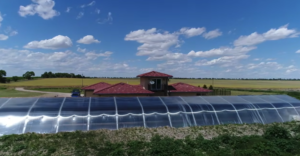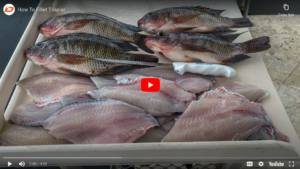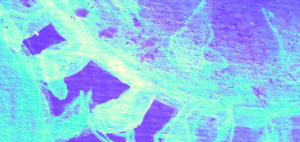Sandponics (iAVs)
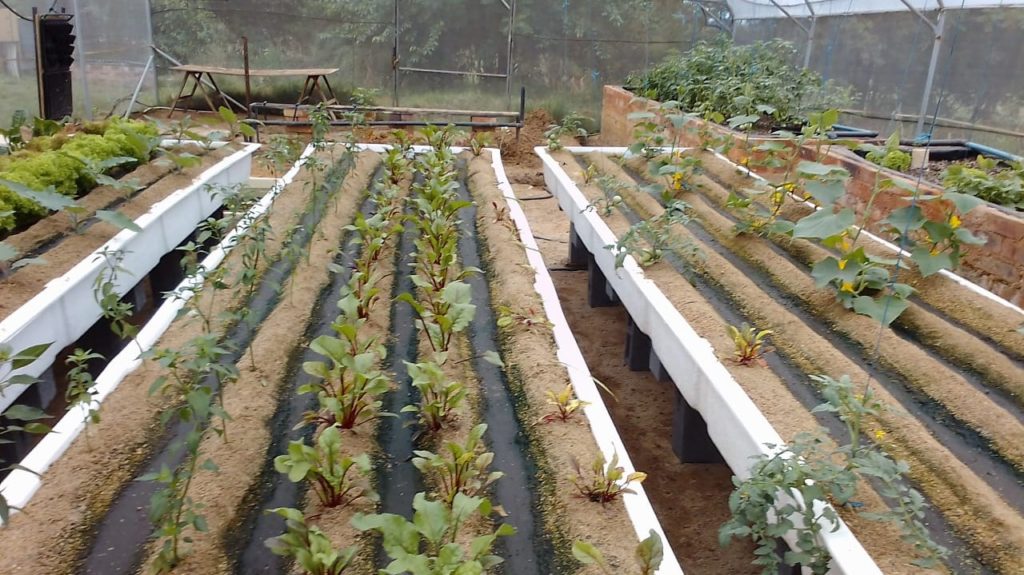
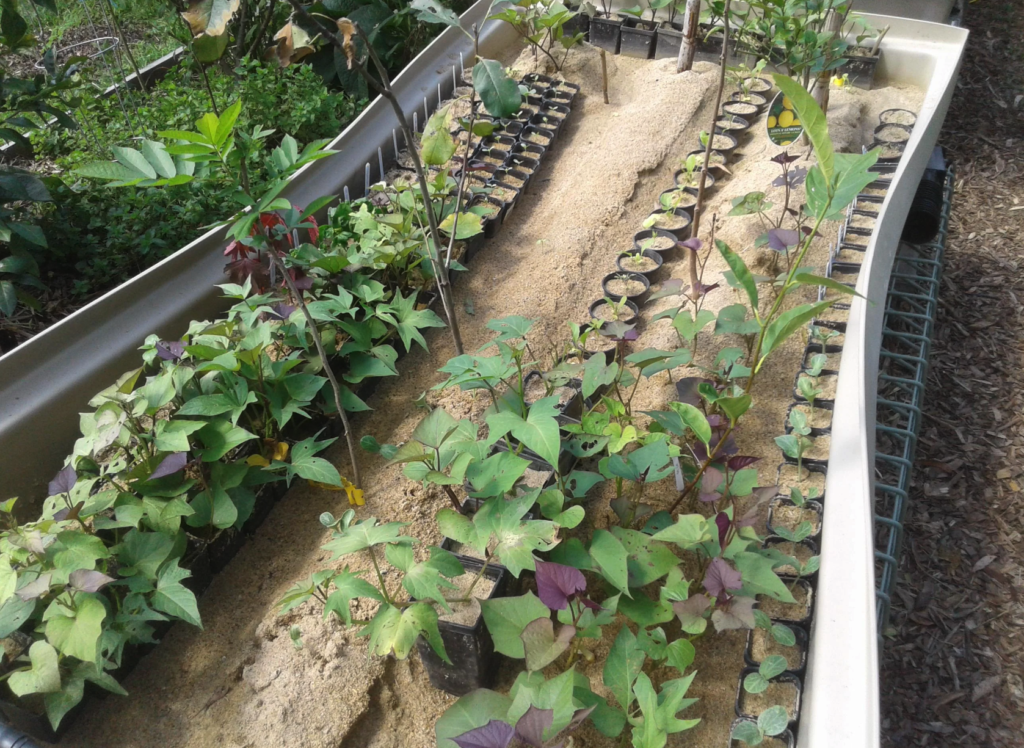
Sandponics, which is also known as IAVS (Integrated Aqua Vegeculture System), is a relatively new and innovative form of hydroponics that utilizes sand as a growing medium. In this article, we will explore the benefits of sandponics and how it works.
What is Sandponics?
Sandponics is a hydroponic growing system that uses sand as a substrate for plant growth. As MyAquaponics people say, it’s aquaponics on steroids. Unlike traditional hydroponic systems that use clay or rocks as a growing medium, sandponics utilizes sand to grow plants.
The sand acts as a support structure for plant roots, while the water provides essential nutrients and oxygen. Sandponics is often used in desert regions where water is scarce or in areas with sandy soil where traditional agriculture is not possible.
How Does Sandponics Work?
Sandponics works by using a mixture of sand and water to create a nutrient-rich growing environment for plants. The sand acts as a filter, removing impurities from the water, while the water provides essential nutrients for plant growth.
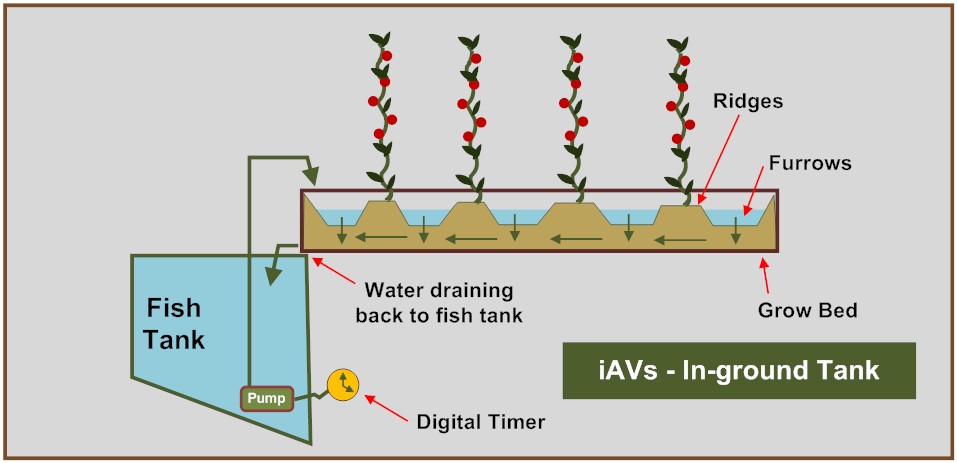
In sandponics, the sand is first washed to remove any impurities or contaminants that may be present. Once the sand is clean, it is placed in a container, and water is added to create a moist growing environment.
To provide nutrients to the plants, a hydroponic nutrient solution is added to the water. The nutrient solution contains all of the essential nutrients that plants need for healthy growth, such as nitrogen, phosphorus, and potassium.
The plants are then planted directly into the sand and water mixture. As the plants grow, their roots take in the nutrients and oxygen from the water, while the sand provides a stable support structure.
Benefits of Sandponics
There are several benefits to using sandponics as a growing system:
- Water Conservation: Sandponics is a water-efficient system that uses significantly less water than traditional agriculture. The sand acts as a filter, removing impurities from the water and reducing the amount of water needed to grow plants.
- Sustainable: Sandponics is a sustainable growing system that can be used in areas where traditional agriculture is not possible. It requires minimal resources and can be used to grow a variety of crops.
- Low Maintenance: Sandponics is a low-maintenance system that requires minimal upkeep. Unlike traditional agriculture, there is no need for soil tilling, weeding, or fertilizing.
- High Yield: Sandponics can produce high yields of crops in a small space. The system is highly efficient and can be used to grow a variety of crops.
Sand
There is a type of sand that is used to make concrete, it is found in nearly every location in the world – anywhere concrete is used, you can find the sand.
In America, the standard used is ASTM C33.
QUIKRETE® All-Purpose Sand (No. 1152) is a washed, properly graded coarse sand with multi-purpose uses. Meets ASTM C 33 specifications.
Pump/Watering
One of the core goals of the iAVs irrigation regime is to remove less than 25% of the fish tank volume during each 15 – 20 minute pumping cycle. Assuming correct tank design (sloping/cone-shaped bottom) and pump capacity, all solids will be removed during each pumping cycle and the water will be crystal clear.
For example:
- 6:00am (dawn or pre-dawn) – 1st pump cycle of the day starts)
- 6:30am – drainage completed. Feed fish all they’ll eat in 15 minutes
- 8:00am – 2nd pump cycle (1/4 of tank volume, each)
- 10:00am – 3rd pump cycle
- 12:00pm – 4th pump cycle
- 1:00pm – Feed fish all they’ll eat in 15 minutes
- 2:00pm – 5th pump cycle
- 4:00pm – 6th pump cycle
- 6:00pm – 7th pump cycle
- 8:00pm – 8th pump cycle (dusk or slightly after, depending on season and location).
Note: Pump remains OFF overnight.
If you provide these 8 pump cycles of 1/4 tank volume each per day, then you’ll have 2 complete tank exchanges daily and a full tank volume filtration following every feeding. If you do this then solids will NOT accumulate nor reduce dissolved oxygen levels nor stimulate alga growth or disease organisms. The ENTIRE point of filtration (e.g. sand) is the removal of the fish ‘waste from the water column. The first goal is to extract the ‘wastes’, then let the sand filter out ALL of the suspended solids (including the fraction too small to see).
Water Introduction
— Rainwater is always the best source of water.
— Phosphoric Acid is what is used to lower PH.
— Hard water needs to be treated with amino acids to remove the calcium and magnesium.
— Microbes are the most important part of Sandponics.
— Vinegar will kill microbes and prevent their growth.
— Vinegar may kill your fish
— If you ever have dirty water, you fix it by running it thru the sand beds a few times, unless it is silt or clay.
— Do NOT ADD ANYTHING except for fish food, do not add fertilizers, if you need to you can foliar feed, but systems take 3 months to mature so you must wait for the soil biology to build up in high numbers
YOUR PH MUST BE AT 6.4 (+/-.4) IF THE PH IS OVER 7 ALL THE AMMONIA HIGHLY TOXIC TO THE FISH – IF THE PH IS UNDER 7 ALL THE AMMONIA IS CONVERTED TO AMMONIUM AND WILL ACT AS A BUFFER TO KEEP YOUR FISH SAFE.
ALWAYS CHANGE YOUR PH IN A SEPARATE CONTAINER, CHECK IT, WAIT, AND CHECK IT AGAIN BEFORE ADDING IT TO YOUR TANK.
If you need help check out this site: https://www.aquariumadvice.com/forums/f12/your-guide-to-ammonia-toxicity-159994.html
You can see that with a TAN reading of 1ppm at a PH of 7.8 the fish are already in danger, at 2ppm the fish would be dead if the water is over 22 degrees C
If you kept your PH below 7, even with a TAN of 4ppm the fish would be safe until the water hits 28 degrees C!
Best Plants for Sandponics/IAVs
Amaranthus, Arugula, Basil, Beans (bush, heirloom, pole, wax), Beet (greens, root), Bell Peppers, Bitter Gourd, Blackberry, Bok Choy, Broad Bean (Fava), Broccoli, Cabbage(s), Cannabis, Cantaloupe, Carrot, Cauliflower, Cayenne Pepper, Chinese Potato (country potato), Chives, Coriander, Cos Lettuce, Cow pea, Chrysanthemum, Cucumber, Dill, Eggplant (Aubergine), Garlic, Groundnuts (peanut), Habanero Pepper, Honeydew, Jalapeño Pepper, Kale, Leaf lettuce(s),. Maize (corn), Marigold (African, French), Mustard (greens and seed), Okra, Onions, Oregano, Raspberry, Rice (upland), Rosemary, Palak, Papaya, Pumpkin, Snake Gourd, Snow Pea (sugar pea), Spinach, Squash (acorn, butternut, yellow, winter), Strawberry, Sugar Cane, Swiss Chard, Sweet Potato, Thyme, Tomato (all types), Watermelon, Winged Bean, Zucchini
Radish, Parsley, Stevia, Spring Onions, Apple, Peach, Lemon, Kumquat, Grape, Zinnia
Conclusion
Sandponics is a unique and innovative form of hydroponics that utilizes sand as a growing medium. It is a sustainable and efficient growing system that can be used in areas where traditional agriculture is not possible.
While sandponics is still a relatively new technology, it has the potential to revolutionize the way we grow crops and conserve water resources. With its low maintenance requirements and high yield potential, sandponics is a promising solution for sustainable agriculture.


